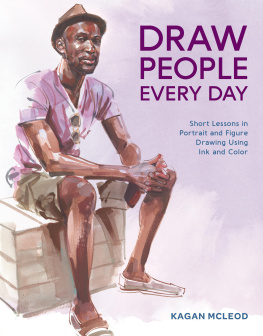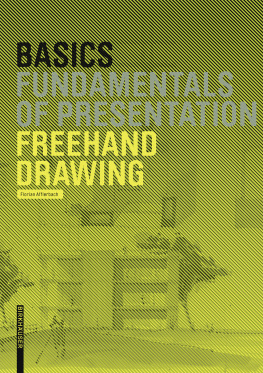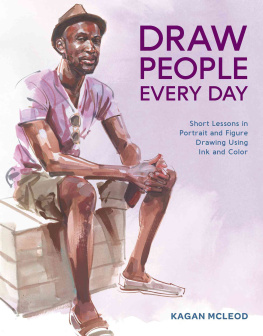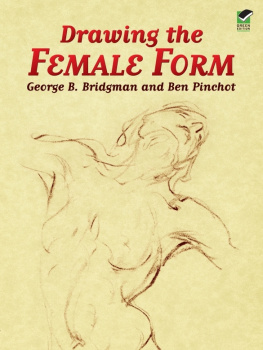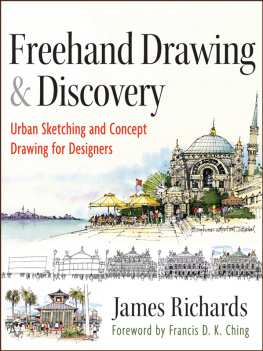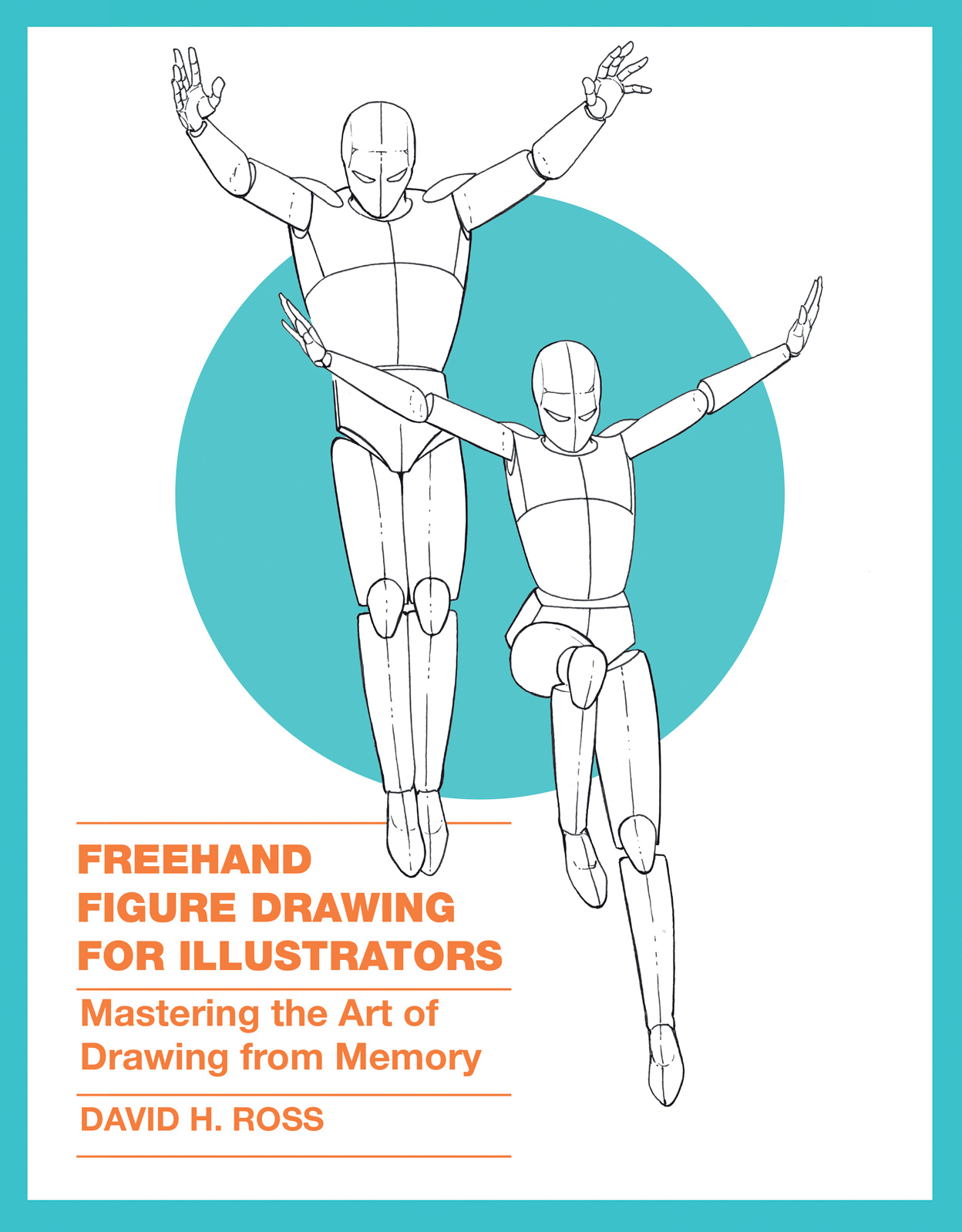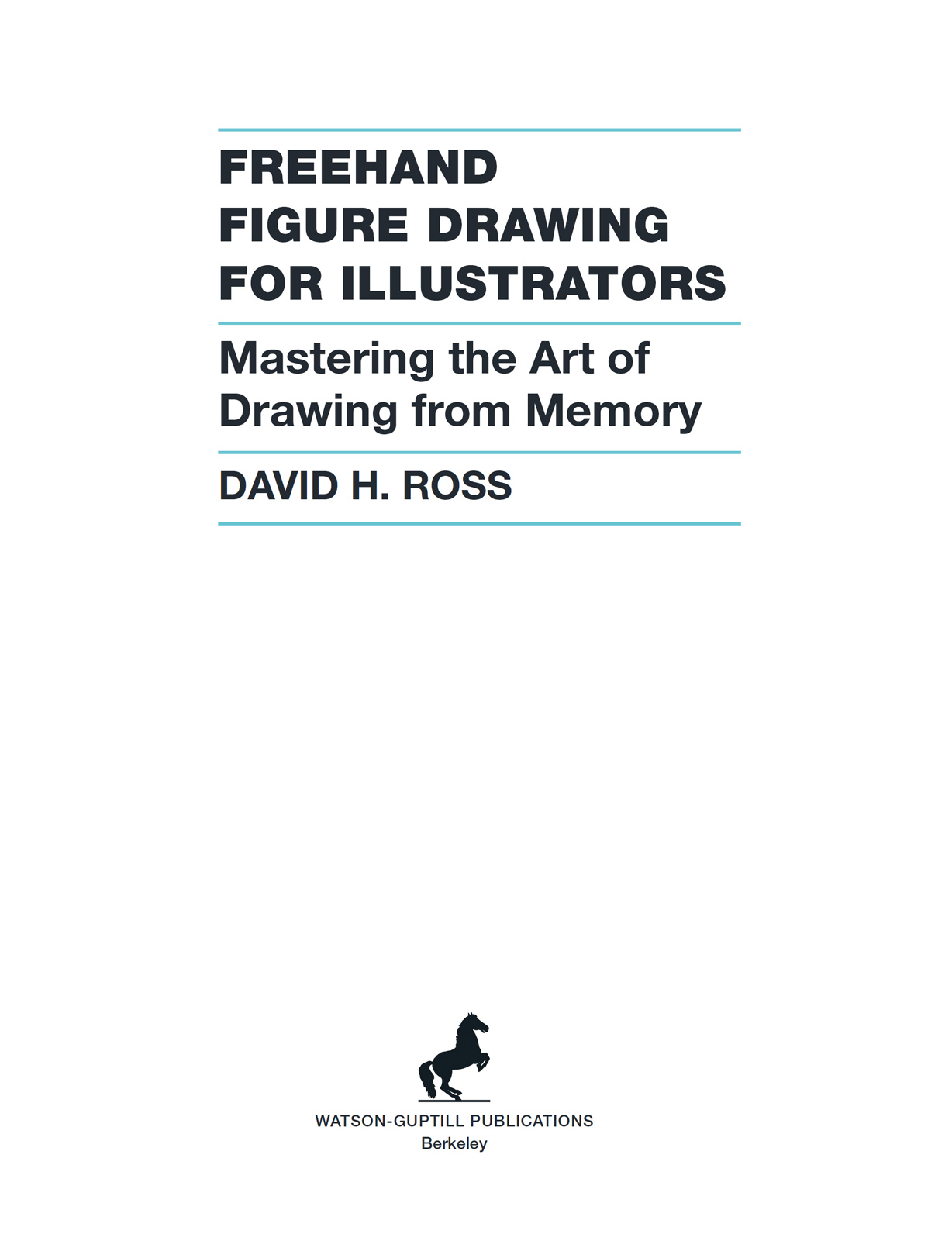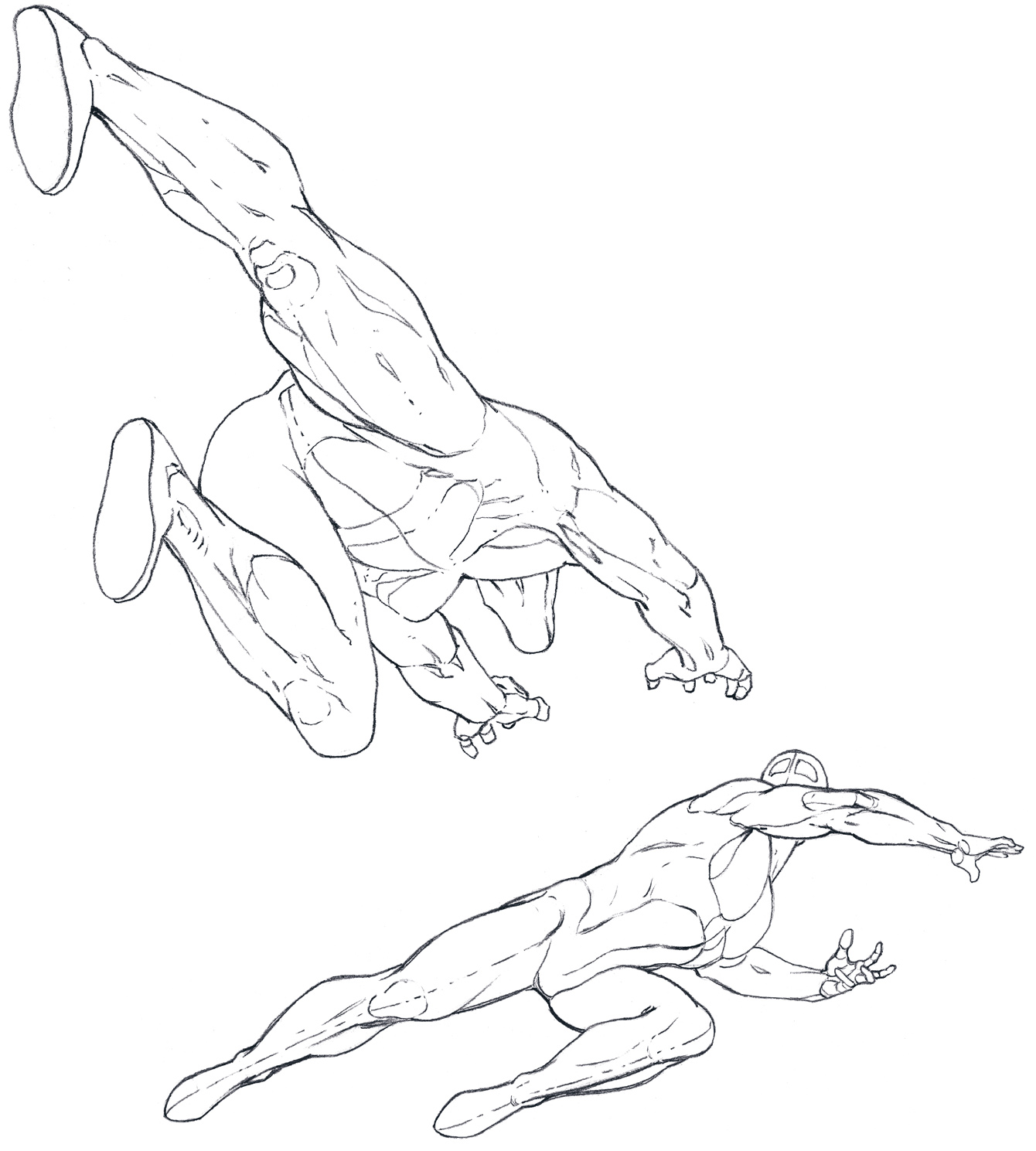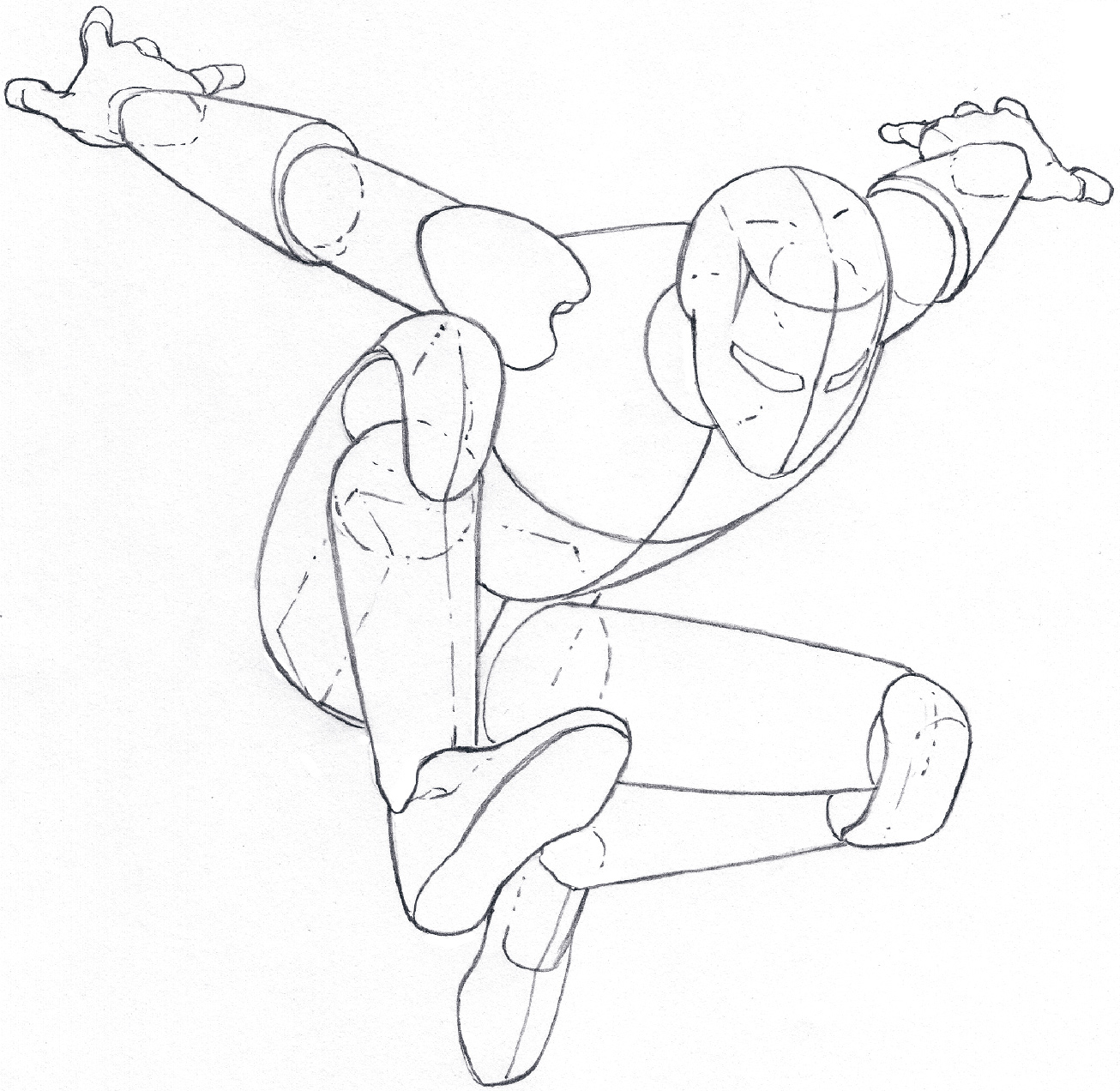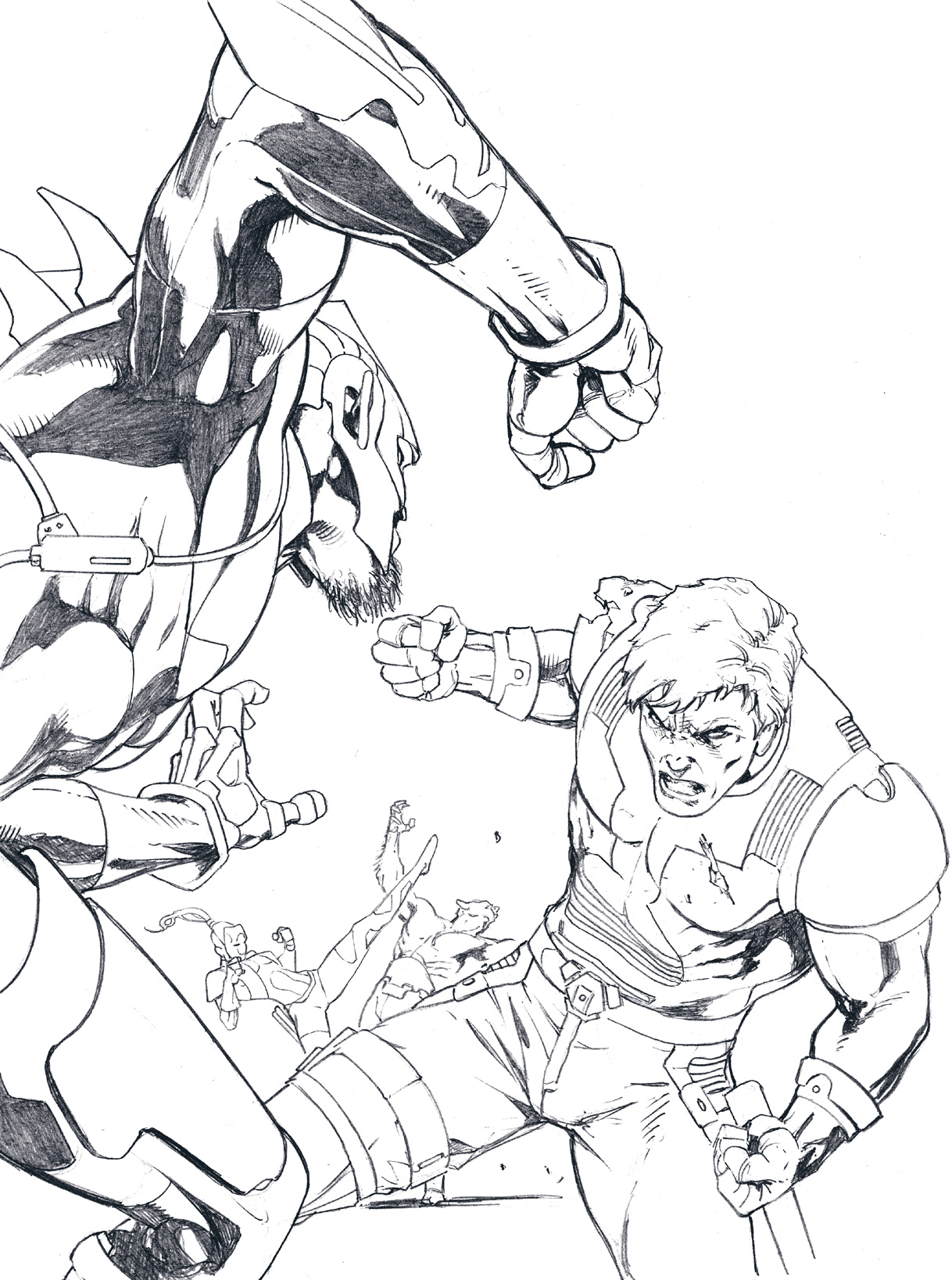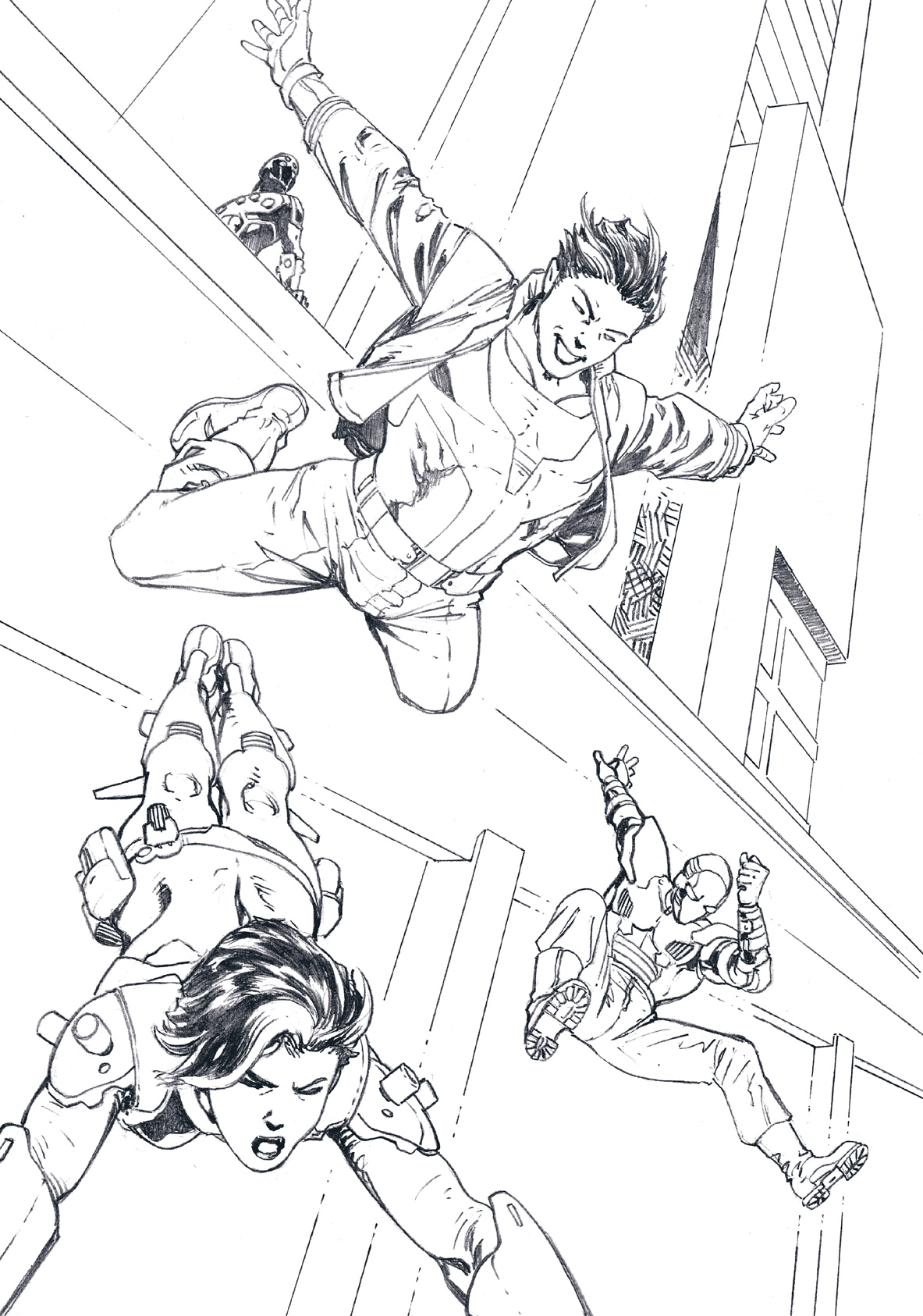Copyright 2015 by Dave Ross
All rights reserved.
Published in the United States by Watson-Guptill Publications, an imprint of the Crown Publishing Group, a division of Penguin Random House LLC, New York.
www.crownpublishing.com
www.watsonguptill.com
WATSON-GUPTILL and the WG and Horse designs are registered trademarks of Penguin Random House LLC
Library of Congress Cataloging-in-Publication Data
Ross, Dave (Graphic novel artist)
Freehand figure drawing for illustrators : mastering the art of drawing from memory / David H. Ross.First Edition
pages cm
1. Figure drawingTechnique. 2. Human figure in art. I. Title.
NC765.R587 2015
743.4dc23
2014049539
Trade Paperback ISBN: 978-0-3853-4623-8
eBook ISBN: 978-0-385-34624-5
Design by Kara Plikaitis
v3.1
DEDICATED TO
W. Harold Ross
My father, who encouraged me to pursue a career that would bring me happiness and fulfillment.
ACKNOWLEDGMENTS
I would like to thank my students for inspiration, Design Source for technical support, and my wife, Judi Michelle, for her dedication, patience, and encouragement.
FOREWORD
Boy, have you got the right bookby the right author/artist!
Dave Ross and I go way back, all the way to 1990, when fate tossed us together on a comic book for Marvel titled Avengers West Coast , with me as scripter and him as penciler. Almost from the start, and for the next four years, whenever I sat down to plot a story that featured the likes of Iron Man, Hawkeye, the Vision, Spider-Woman, U.S. Agent, and the rest of the Hollywood superhero contingent locked in battle with Ultron, the Hangman, Dr. Demonicus, et al., I could see the tale unfolding in my head as if already drawn by Dave, in that particular combination of high photorealism and exaggerated action that few comics artists have ever been able to pull off as well. And when I got the penciled pages of art back from him, ready for me to add dialogue and captions, I was never disappointed. The guy could drawand he could tell a ripping good yarn, panel after panel, while doing it.
So now I look at the table of contents of this bookand the chapter headings are like a laundry list of the things Dave Ross is good at drawing: perspective (whether in a living room or in an alternate dimension); human figures standing, walking, running, crouching, sitting, and recliningeven figures that are flying, leaping, or getting knocked on their butts; the human head from all angles; hands and feet (and fists and kicks); the skeleton (even when its hidden by skin); muscular anatomy (nobody does it better); and, yes, dynamic action.
What can I say? Youre gonna be learning from the best!
Roy Thomas
Roy Thomas has been a comic book writer, primarily for Marvel Comics and DC Comics, since 1965.
INTRODUCTION
The term freehand drawing describes the practice of drawing from the imagination without the aid of a live model or photographic reference.
Freeing the artist from any dependency on such sources allows for maximum versatilitythe artist is restricted only by his or her imagination or skill level. As it applies specifically to the human figure, it is the drawing of the body in any pose imaginable and from any anglewithout the need for a reference.
Freehand Figure Drawing for Illustrators offers up a constructive approach to drawing the human form that can be traced back to the early 1900s. Illustrators of that era developed a system for blocking out the human figure using a drawn mannequin .
This book focuses on that drawn mannequin, putting it through its paces in ways that those early illustrators could not have foreseen. There are studies of standing, walking, and running figures, of course, but also leaping, dodging, and flying ones. Mannequins throwing punches and high kicking demonstrate the mechanics of motion and will help you to examine the limitations of the bodys movement. The drawn mannequin is nothing more or less than a visualization toola simplified representation of the human body that enables the artist to block figures into place with proper proportions and posing. It is particularly useful when dealing with more complex camera angles (for example, the birds-eye and worms-eye views).
With a drawn mannequin, the artist doesnt have to deal with the details of specific anatomy, folds in clothing, or lighting and can focus on achieving a solid, well-constructed underdrawing (or mannequin), first.
The mannequin is transparent (which is why its also known as a glass mannequin ) to help the artists using it think of what they are drawing as three-dimensional or in the round . This is a crucial mind-set for artists to attain. They must think of everything they draw as having volume of occupying spaceif they wish that sense to be conveyed to their audience. On an even more practical note: the mannequins transparency allows the artist to locate the sometimes obscured connection of that far arm or leg to the trunk of the body.
Mannequins used in this book range from basic to intermediate to advanced. Each successive category introduces more human are weighted toward the advanced model.



